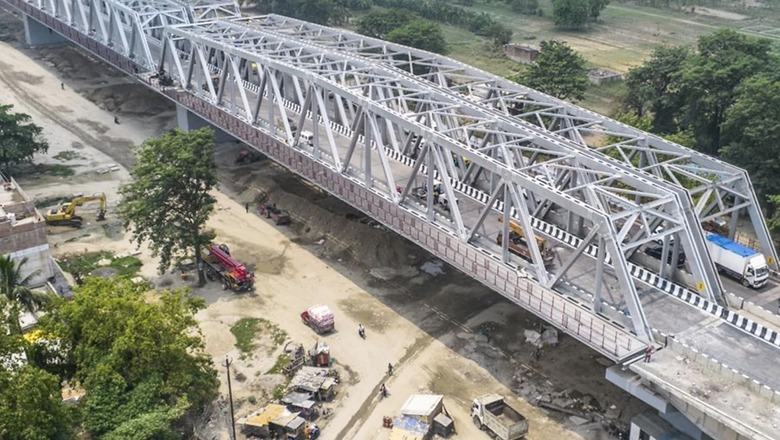
views
A fully renovated and operational Mahatma Gandhi Setu (MG Setu) in Bihar will open to traffic after its eastern flank is inaugurated on June 7. The 39-year-old structure over the river Ganga will become the longest steel bridge in the country with a length of approximately 5.6 km.
The Gandhi Setu is the first balanced cantilever bridge in the country that has been dismantled and converted into a simply supported bridge. The existing concrete substructure is retained, and the superstructure has been replaced by a steel-deck one. The bridge rehabilitation works began in 2017 and the western flank was inaugurated in 2020. It is nothing short of remarkable that a complex bridge rehabilitation project of this scale is completed in five years.
- Eastern flank (downstream side bridge) completed and handed over for traffic opening in 18 months
- Erection of steel superstructure completed in 13 months
- 50 pier caps modified and cast in 11 months
- Bridge dismantling activities completed in 8 months
Reminiscing the journey, Afcons project manager SK Misra said, “Earlier there used to be a waiting period of 3-4 hours in case of traffic jams and due to the poor condition of the bridge. But now the traffic will be able to cross the bridge in just 15-20 minutes.”
Almost a lakh of passenger vehicles use this bridge every day. The link is vital to the state’s socio-economic development because it connects north and south Bihar.
“We completed the entire downstream lane (eastern flank) in 18 months and various factors helped to speed up the construction works. There were huge learnings when we were working on the upstream side (western flank). Fabrication of trusses for the downstream side was done in advance. We improvised and innovated in our dismantling methodologies like the use of a holding frame for wet spans. We worked parallelly on pier modification and truss erection,” Misra said.
The biggest concern in the project was the running traffic on the adjacent bridge at all times. “At the top of it, we had to handle a huge volume of dismantling works with environment-friendly disposal of waste material. We had to make sure that no debris from bridge demolition settled into the river,” Misra said.
Almost 66,360 metric tonnes of steel have been used in the entire bridge superstructure. Elaborating on this, the project manager said, “The steelworks was a massive scope in the project. Procurement and fabrication works were completed through suppliers and workshops across India.”
The construction of a river bridge is always fraught with danger, especially in flood-prone areas. The risk was high in the case of Gandhi Setu too. “During monsoon, we had to negotiate up to 7m of water level rise and high currents in the river zone. Flooding was normal and shoal formation due to siltation in dry seasons hindered barge movements,” said Misra.
The hard work has paid off and Misra is satisfied that the project team has given the iconic Gandhi Setu a new lease of life.
Read all the Latest India News here




















Comments
0 comment